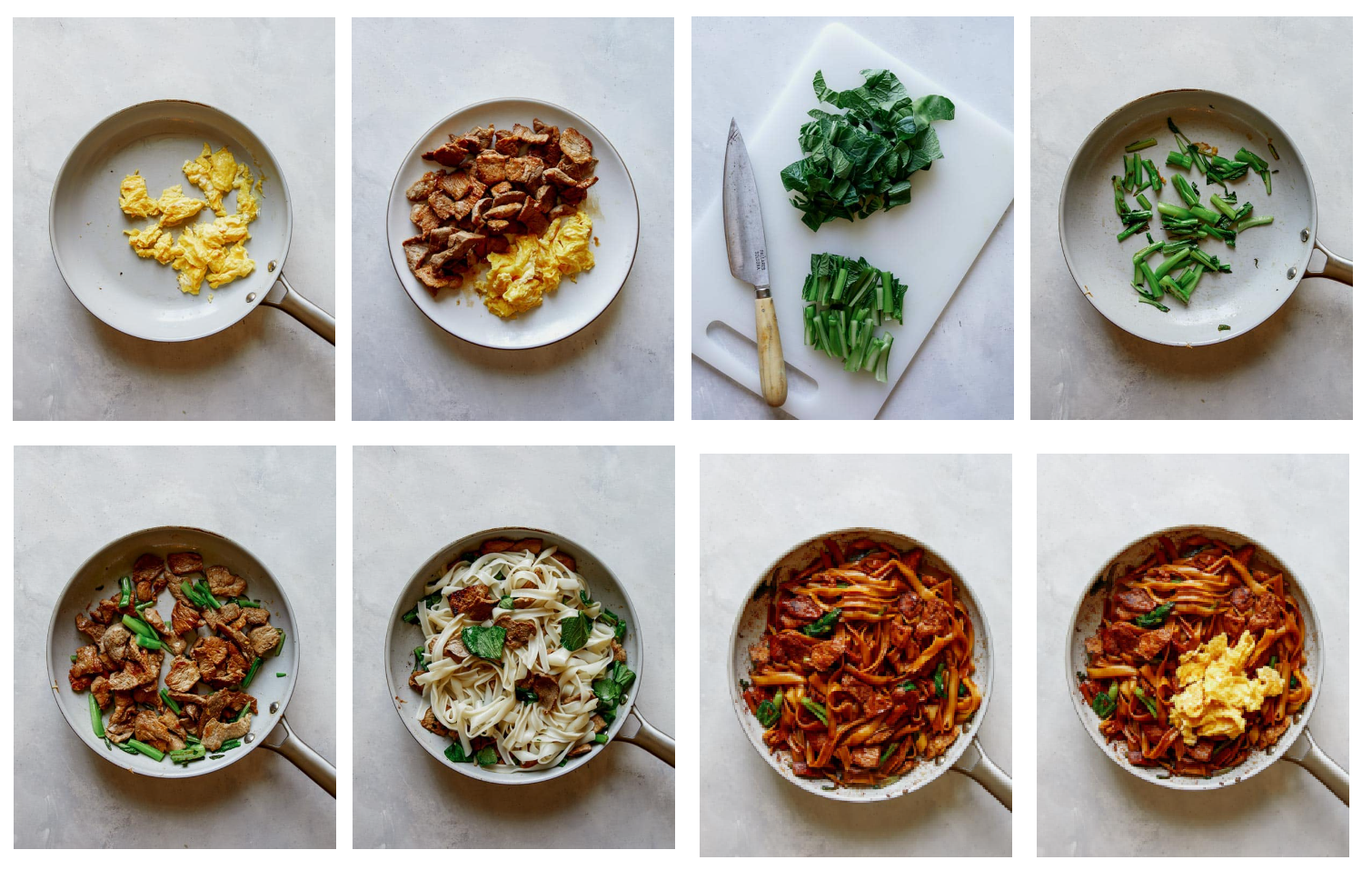Pad See Ew: A Mouthwatering Thai Dish Explained and Savored
Thai cuisine is renowned for its tantalizing flavors, rich spices, and vibrant ingredients. Among the plethora of delectable Thai dishes, Pad See Ew holds a special place in the hearts of food enthusiasts around the world. This stir-fried noodle dish, known for its bold flavors and satisfying textures, is a staple in Thai street food culture. In this article, we will delve into the origins of Pad See Ew, its distinctive ingredients, and explore how to prepare this delectable dish that has captivated taste buds worldwide.

Pad See Ew (Thai rice noodles)
I. The Origins of Pad See Ew
Pad See Ew, also spelled Phat Si Io or Pad Siew, is a classic Thai street food dish with Chinese influences.
The name "Pad See Ew" roughly translates to "fried soy sauce noodles" in Thai. This dish is believed to have originated from the Chinese community in Thailand and has evolved over time to incorporate local flavors and ingredients.
The story behind Pad See Ew is a fusion of culinary traditions. Chinese immigrants brought the concept of stir-frying noodles to Thailand, and it quickly became popular among locals.
The dish gradually incorporated Thai ingredients, such as sweet soy sauce and Thai kale, resulting in the creation of the unique and delicious Pad See Ew we know today.
II. Essential Ingredients and Cooking Techniques
To prepare an authentic Pad See Ew, several key ingredients are required. The dish typically includes wide rice noodles, soy sauce, dark soy sauce, garlic, eggs, Chinese broccoli (or Thai kale), and a choice of protein, such as chicken, beef, or tofu.

Pad See Ew Ingredients

Pad See Ew Ingredients

Pad See Ew Ingredients
The cooking process begins by stir-frying minced garlic in a hot wok until aromatic. Next, the protein of choice is added and cooked until it is almost done.
Then, the wide rice noodles are introduced into the wok, followed by the dark soy sauce, sweet soy sauce, and a touch of sugar. The noodles are gently tossed to ensure they are evenly coated with the savory sauces.
After the noodles have absorbed the flavors, a beaten egg is added to the wok, creating a luscious coating on the noodles. Finally, the Chinese broccoli or Thai kale is incorporated and quickly stir-fried until it wilts but retains its vibrant green color.
III. Tips for Perfecting Your Pad See Ew
1. Choosing the Right Noodles:
Traditional Pad See Ew calls for wide rice noodles, also known as "sen yai" in Thai. These noodles have a flat and broad shape, allowing them to absorb the sauces and retain a satisfying chewy texture.
2. Balancing the Sauces:
Achieving the perfect balance of soy sauces is crucial. Dark soy sauce adds color and depth, while sweet soy sauce brings sweetness and a glossy finish. Adjust the proportions to suit your taste preferences.

Pad See Ew (Thai rice noodles)
3. High Heat and Quick Stir-Frying:
Pad See Ew is typically cooked on high heat to achieve a slight charred flavor and maintain the crispness of the vegetables. Quick and constant stirring is essential to prevent the noodles from sticking together.
4. Customize with Protein:
While chicken, beef, and tofu are popular choices for Pad See Ew, feel free to experiment with other proteins like shrimp or pork according to your preference.
Pad See Ew encapsulates the harmonious blend of Thai and Chinese culinary traditions, resulting in a tantalizing dish that has captured the hearts and palates of food lovers worldwide.
With its chewy noodles, fragrant sauces, and vibrant vegetables, Pad See Ew offers a burst of flavors in every bite. By understanding its origins, mastering the essential ingredients, and following key cooking techniques, you can recreate this beloved Thai street food dish in your own kitchen.
So, gather your ingredients, fire up the wok, and embark on a flavorful journey to savor the goodness of Pad See Ew. Whether you're a seasoned Thai food enthusiast or a curious beginner, this dish is sure to leave you craving for more.